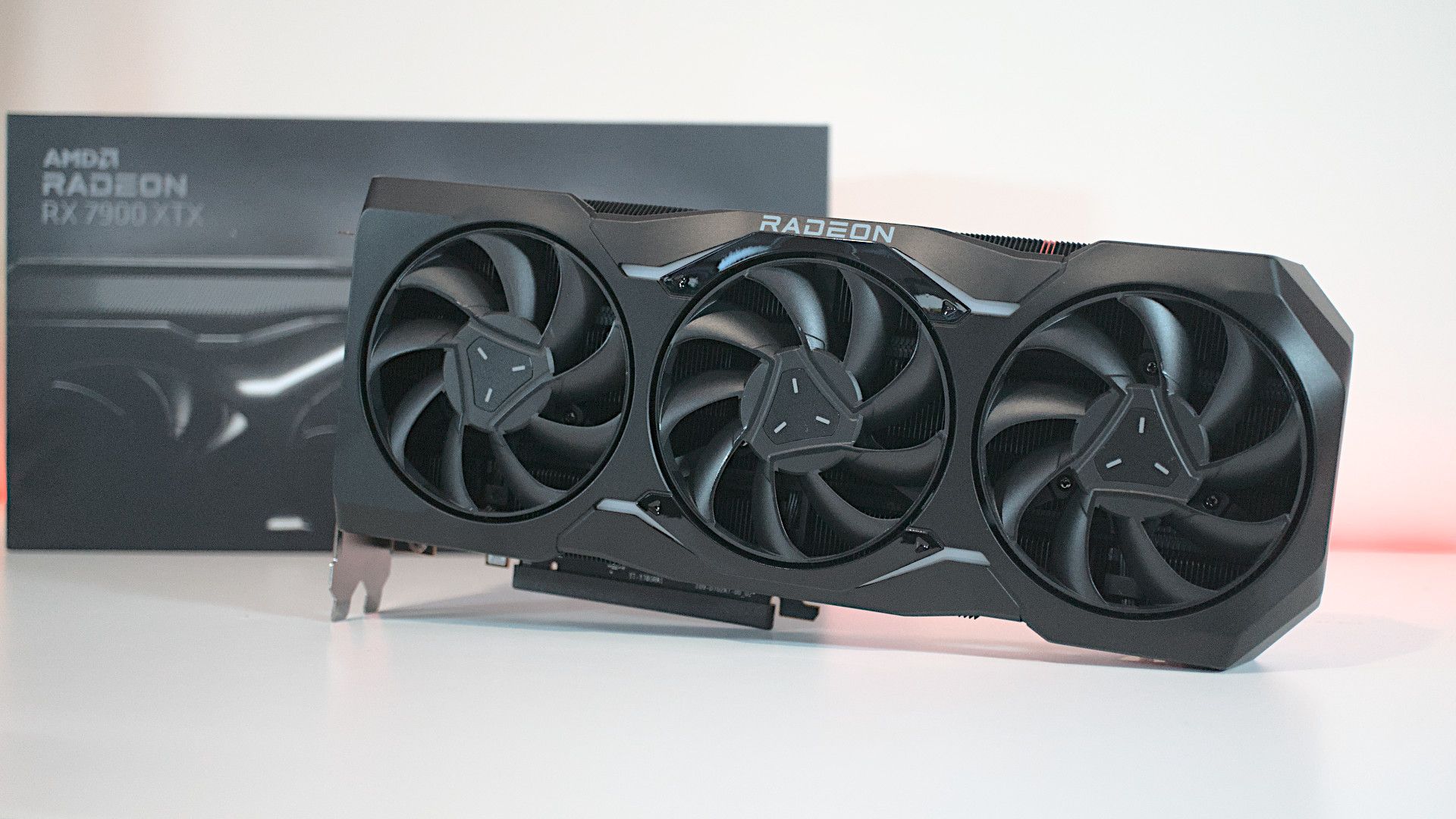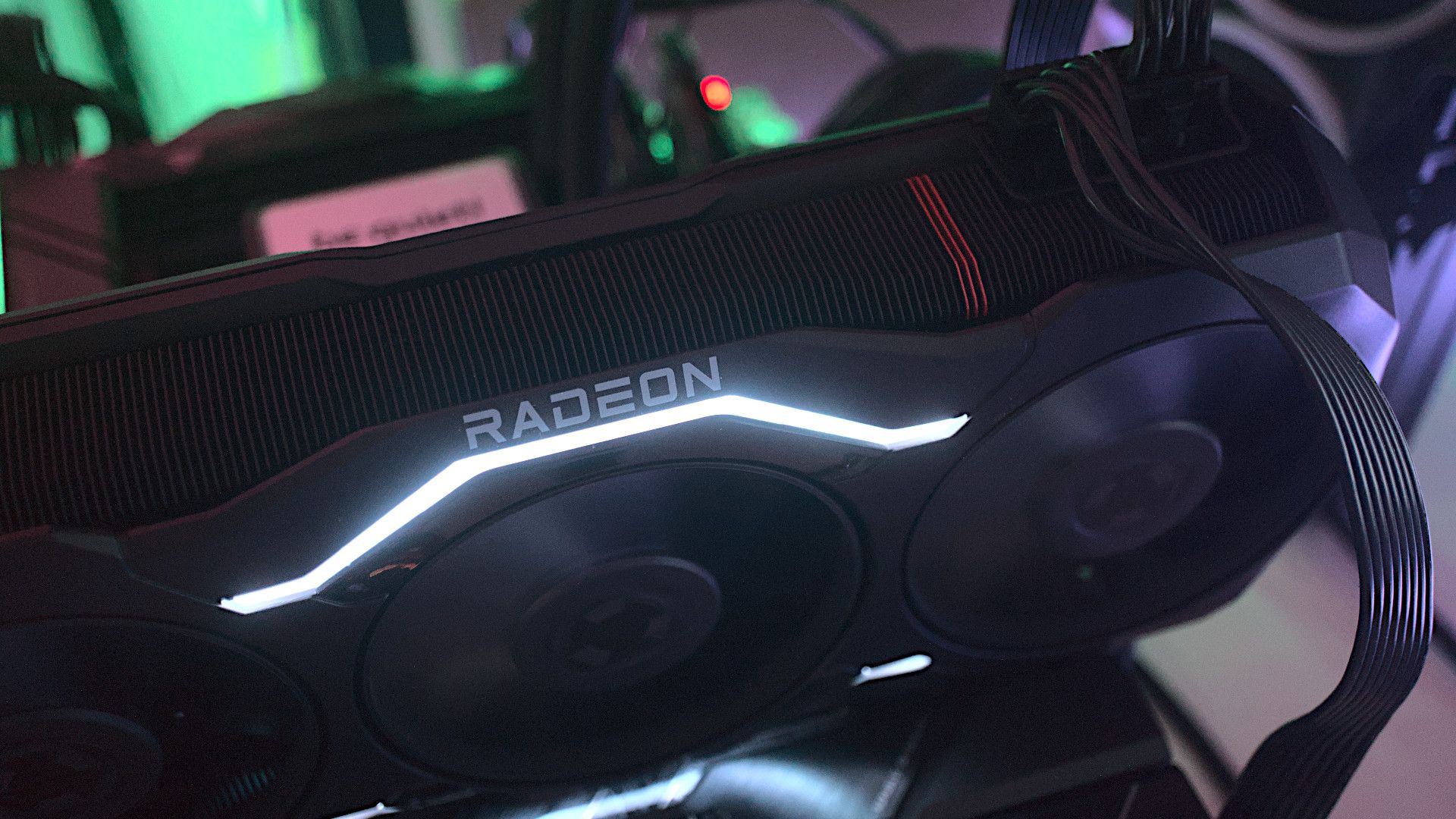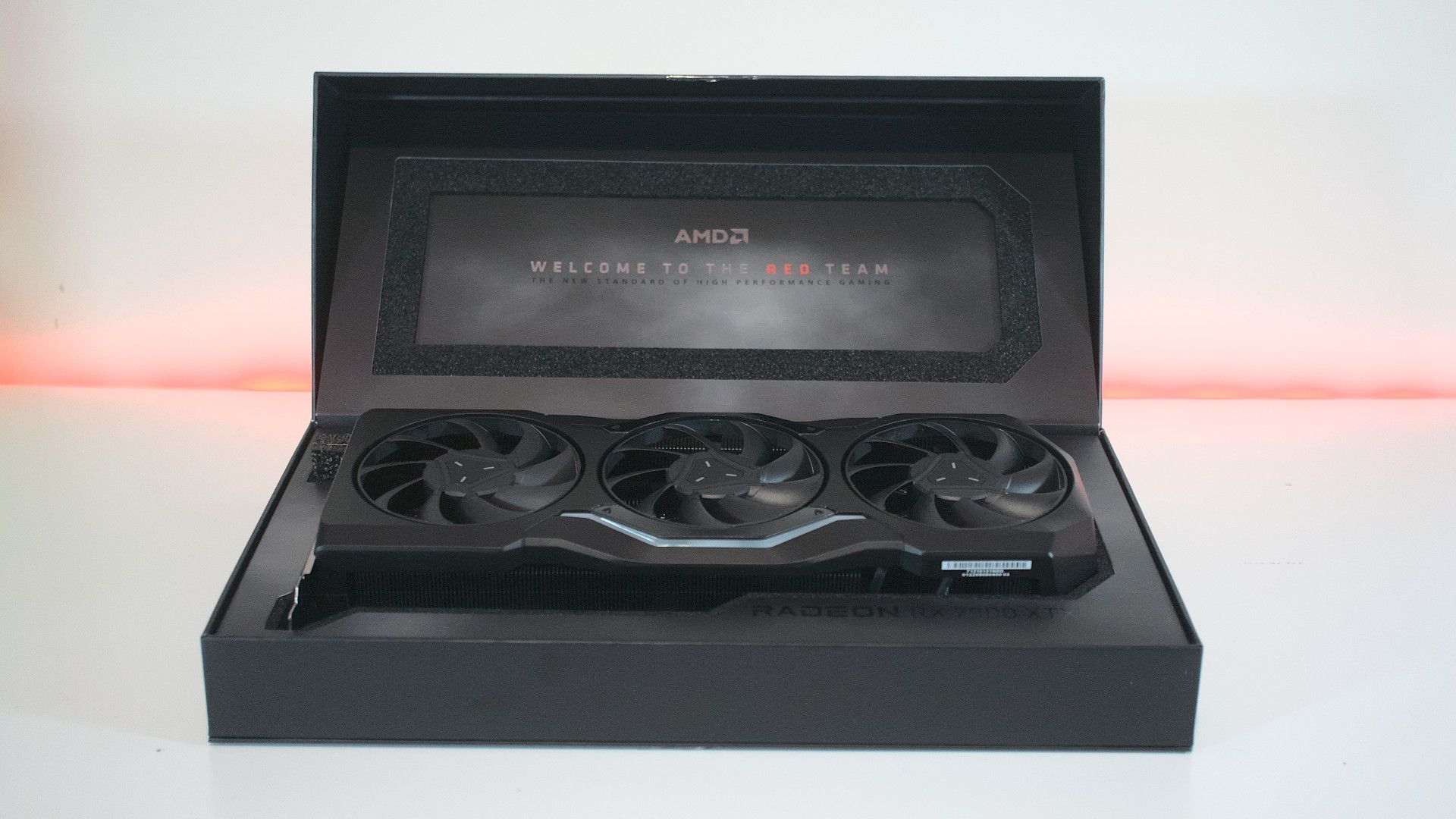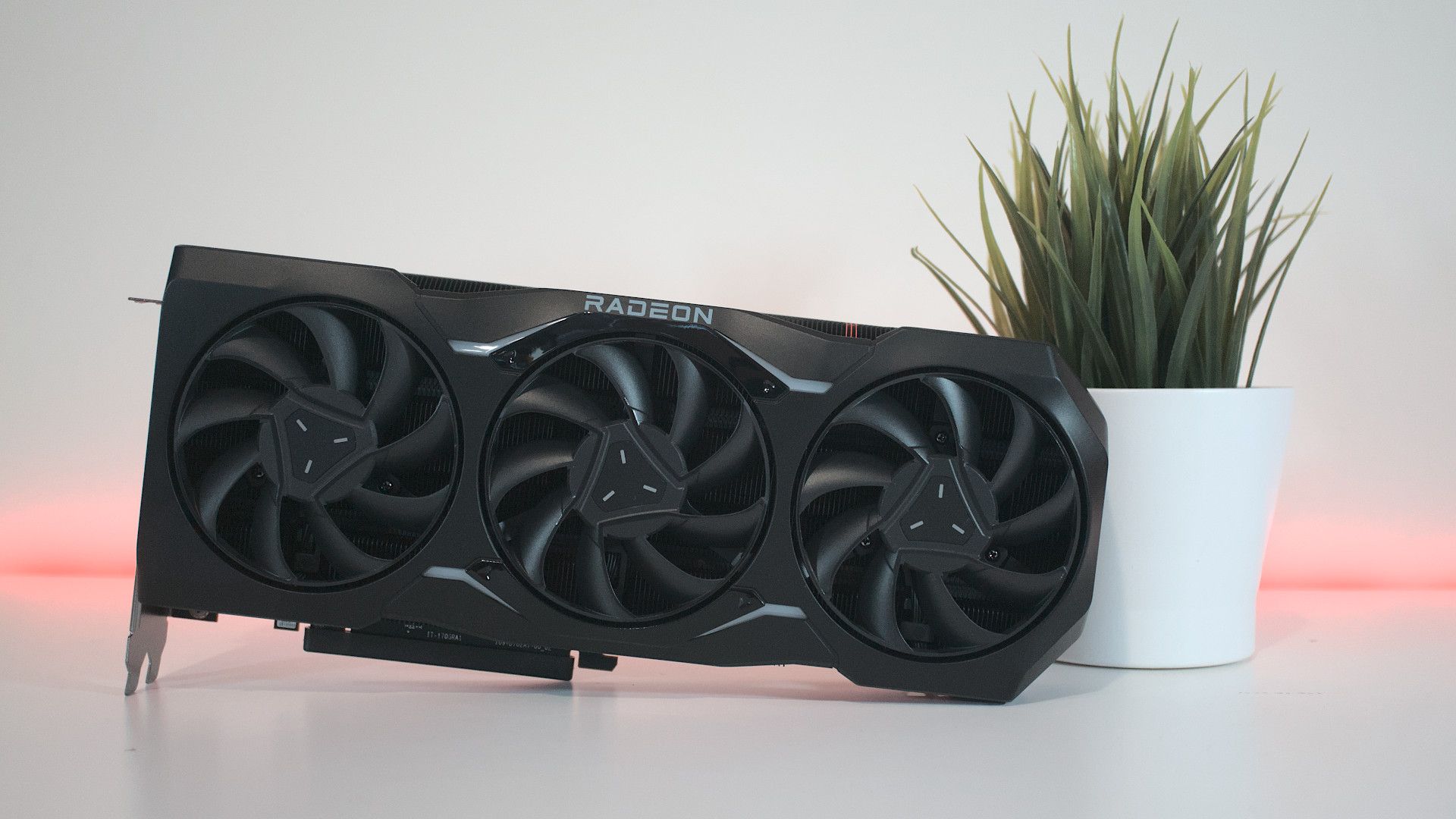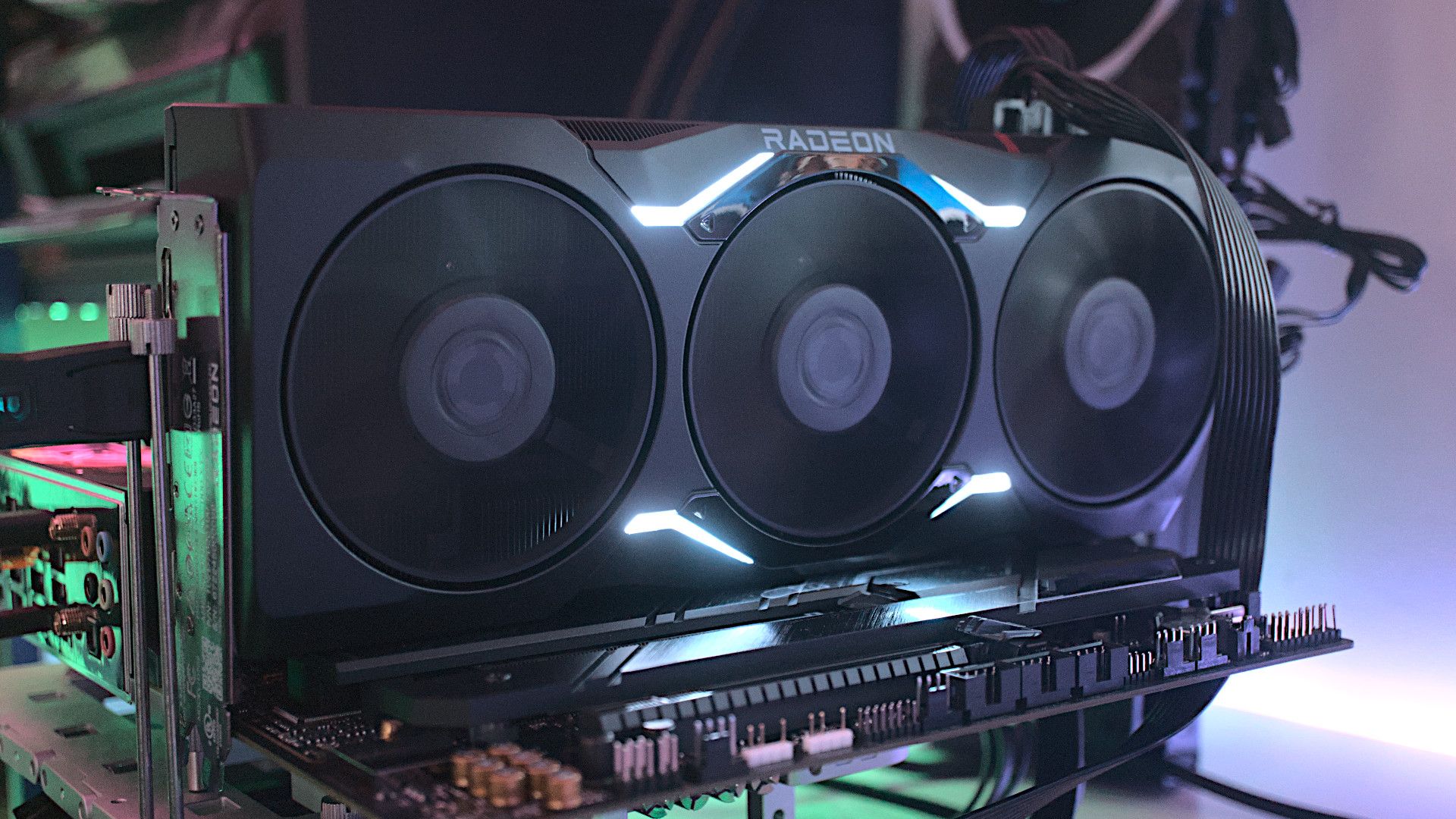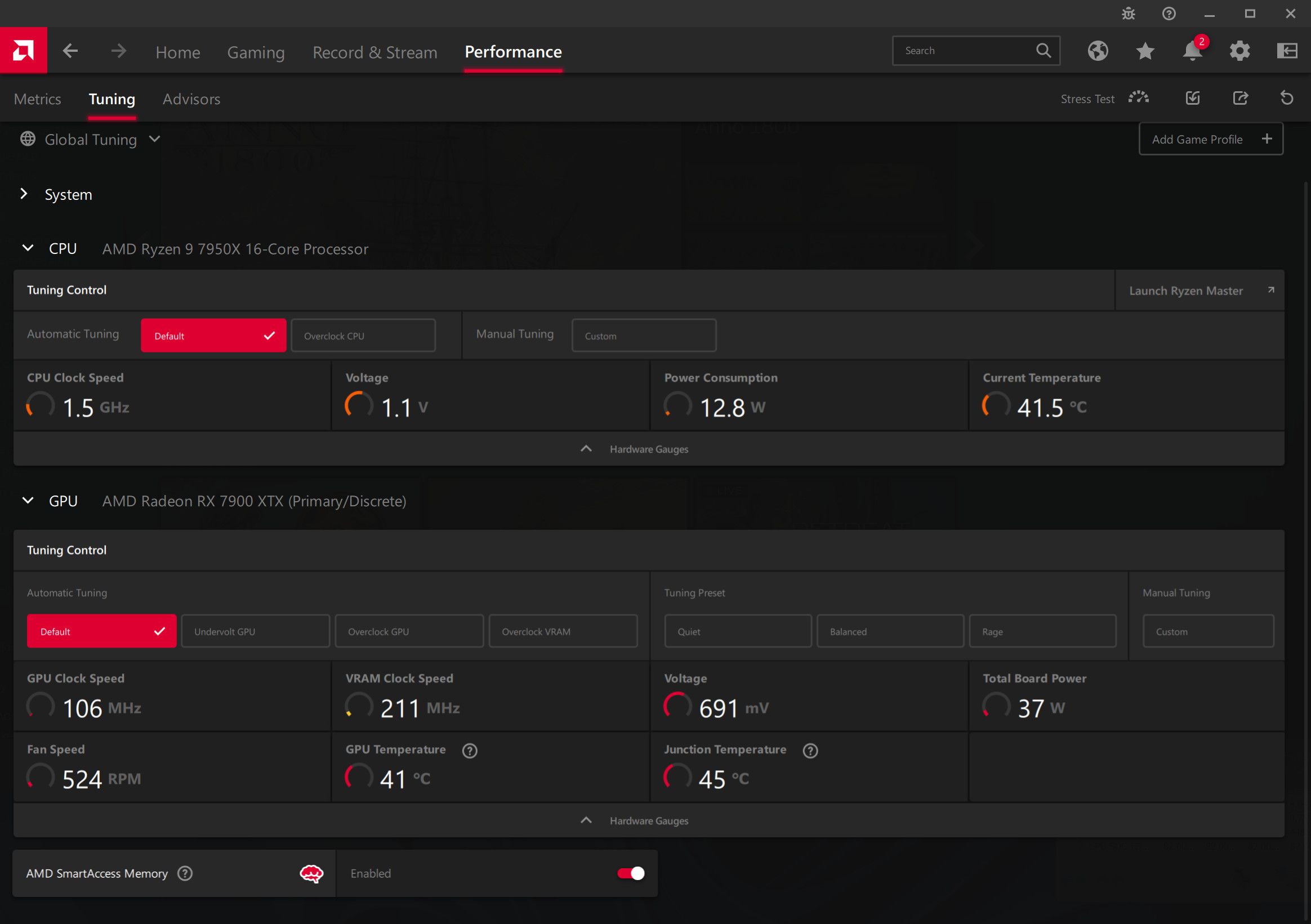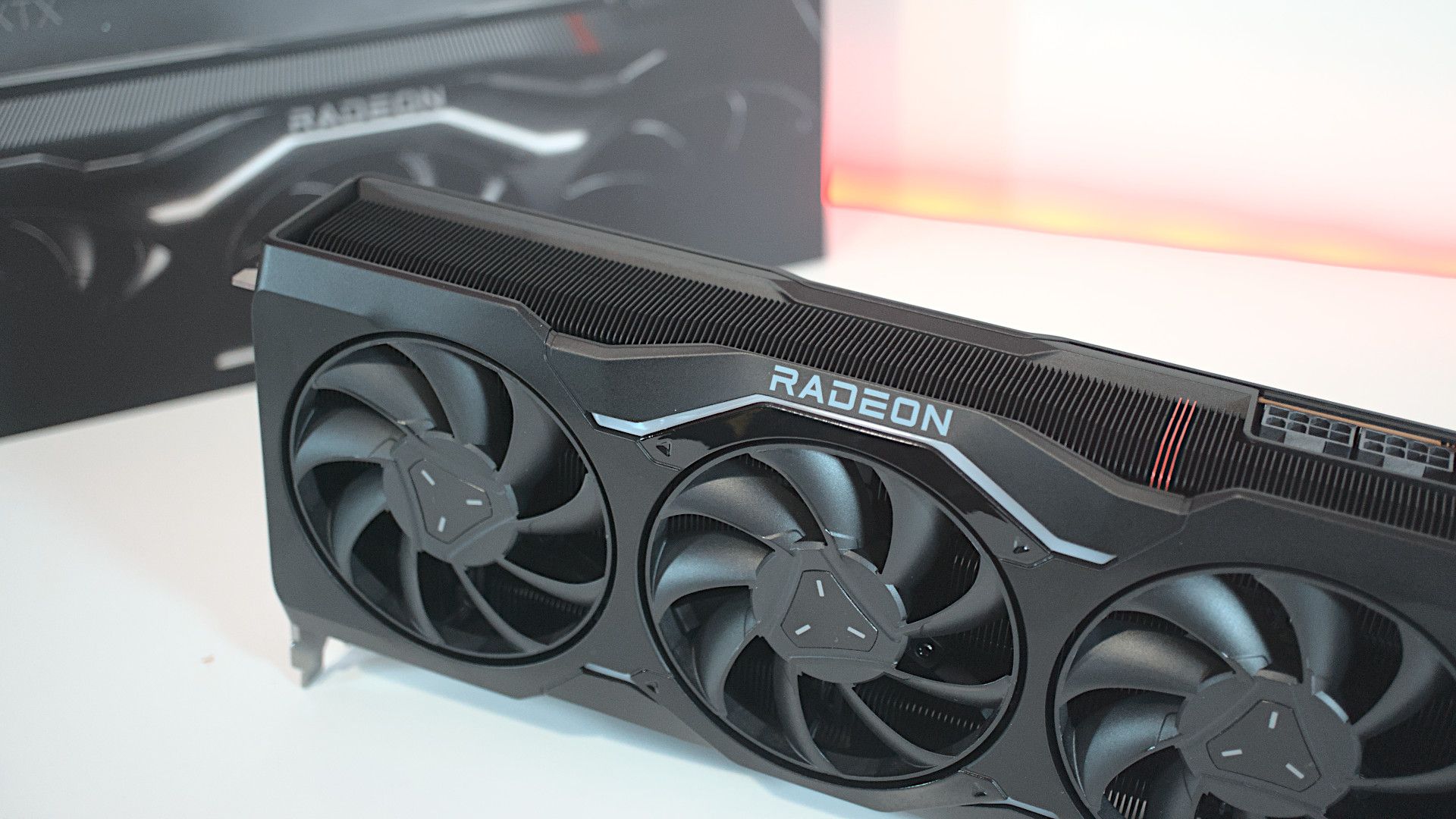Quick Links
Today's an exciting day as XDA-Developers has the new AMD Radeon RX 7900 XTX in the house! Billed as a much-improved successor to the outgoing RX 6900 series, these new graphics cards are built on the company's RDNA 3 architecture. The flagship 7900 GPU was designed by AMD to offer the ultimate gaming experience for less than $1,000. Is this a subtle dig at NVIDIA's RTX 40 series pricing? Only the performance will tell!
Okay, we'll cut it short, in case you're in a hurry. The AMD Radeon RX 7900 XTX is a beast of a graphics card. In fact, it's quite possibly one of the best graphics cards you can buy right now for less than $1,000. Whether you're looking to play your favorite games at QHD (2K) or UHD (4K), you're going to have a blast with this GPU. There's a lot to unpack here so let's dive in and explain my findings.

AMD Radeon RX 7900 XTX
The RX 7900 XTX is Radeon's latest flagship graphics card, offering considerable gains across multiple resolutions over the older RX 6000 generation of GPUs.
|
Pros |
Cons |
|---|---|
|
Additional thermistor for ambient temperature |
Not quite a 2 slot GPU |
|
Great value proposition against NVIDIA |
Still relatively expensive |
|
Solid 1440p and 4K gaming performance |
|
|
Excellent reference card design |
|
|
Good thermals and cooling |
AMD Radeon RX 7900 XTX: Pricing and availability
- The AMD Radeon RX 7900 XTX is available for $999.
AMD announced the Radeon RX 7900 XTX alongside the RX 7900 XT on December 12, 2022. The two graphics cards will be available for $999 and $899, respectively. AIB partners such as ASUS, MSI, XFX, and ZOTAC will each price their aftermarket versions accordingly, offering better performance than the reference cards we have in for review.
It's clear AMD is attempting to offer better value by undercutting NVIDIA's launch prices with the RTX 4080 (which the Radeon RX 7900 series is compared against) priced at $1,199.
RDNA 3 architecture
- Switch to chiplets, the first for gaming GPUs.
- Introduction of 2nd Gen AMD Infinity Cache.
- Up to 3,494GB/s of bandwidth with Smart Access Memory.
All the major improvements to the new RX 7900 series can largely be attributed to the move from RDNA 2 to RDNA 3. This latest generation of GPU architecture from AMD is mightily impressive both on paper and in real-world use. Let's start with the new chiplet design, brought across from AMD's Ryzen and EPYC processors. Utilizing this technology, AMD was able to create two specialized dies with a 5.3TB/s (yes, that's terabytes per second) interconnect.
It was an important step to take for AMD in its quest to extract as much performance per watt as possible. This also had the impact of keeping costs low thanks to the ability to dedicate the newer 5nm process technology to the Graphics Compute Die (GCD), where all the magic happens, whilst the smaller Memory Cache Die (MCD) used the mature and less expensive 6nm process.
Making RDNA 3 more efficient resulted in the creation of the 2nd Gen AMD Infinity Cache. We were pleasantly surprised with the first generation, which leverages Smart Access Memory to improve system performance with AMD processors and motherboard chipsets. AMD made bold claims with RDNA 3 with 3,494GB/s of bandwidth using the new Radeon RX 7900 XTX. To put this into perspective, the previous-gen RX 6950 XT only managed 1,794GB/s.
Other areas that saw improvements over RDNA 2 included the Ray accelerators, which are primarily used for high-performance raytracing acceleration. The new Dual Media Engine adds support for hardware-accelerated AV1 encodes up to 8K at 60FPS, and there are some notable improvements for streaming. Finally, AMD introduced the new Radiance Display Engine, effectively doubling the display bandwidth over RDNA 2 with DisplayPort 2.1. This will allow for refresh rates up to 900Hz, 480Hz, and 165Hz for 1440p, 4K, and 8K monitors, respectively.
Design & features
- 2.5-slot design with a tri-fan cooling solution for ample thermal capacity.
- Reference card has a new thermistor to measure the ambient temperature within the case.
- Ports include one HDMI 2.1a, two Display 2.1, and one USB-C (with DP 2.1).
The AMD Radeon RX 7900 XTX is quite the reference card. It's a refreshing change from all the bling and lights we often see with AIB graphics cards. This is one seriously good-looking GPU. There's not a huge difference in the cooling for the newer 7900 series compared to the outgoing 6900 series and that's largely down to AMD extracting additional performance per watt with its architecture upgrade. The thermal design power (TDP) rating and power draw are largely the same.
For the AMD Radeon RX 7900 XTX, we're looking at three 92mm fans. The PCB spans the entire length of the card itself, allowing AMD to make use of larger PCB surface area, but this does mean we don't see the airflow pass-through found on NVIDIA's more recent RTX reference cards. It's a beefy shroud, which is great for durability and looks but does mean it's a hefty GPU.
It is, however, a 2.5-slot GPU and AMD isn't forcing anyone to use the 12-pin power adapter we've seen in the news as a fire hazard on select NVIDIA GPUs. It's a somewhat lucky omission for AMD as these GPUs simply do not require the connection as two 8-pin and the PCIe slot are more than capable of providing enough power. We'll have to see how AMD handles a card with a requirement of more than 400W of power.
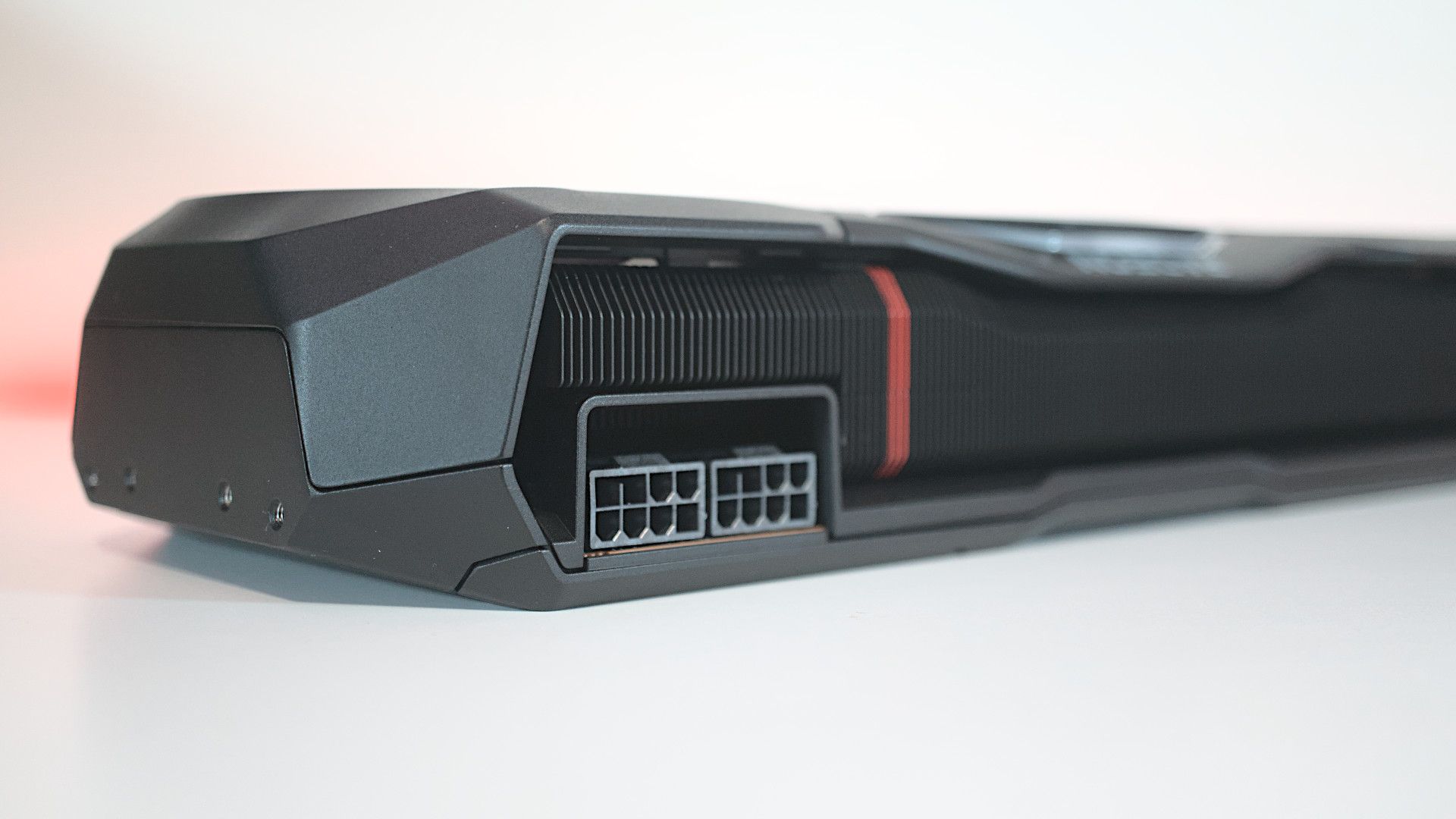
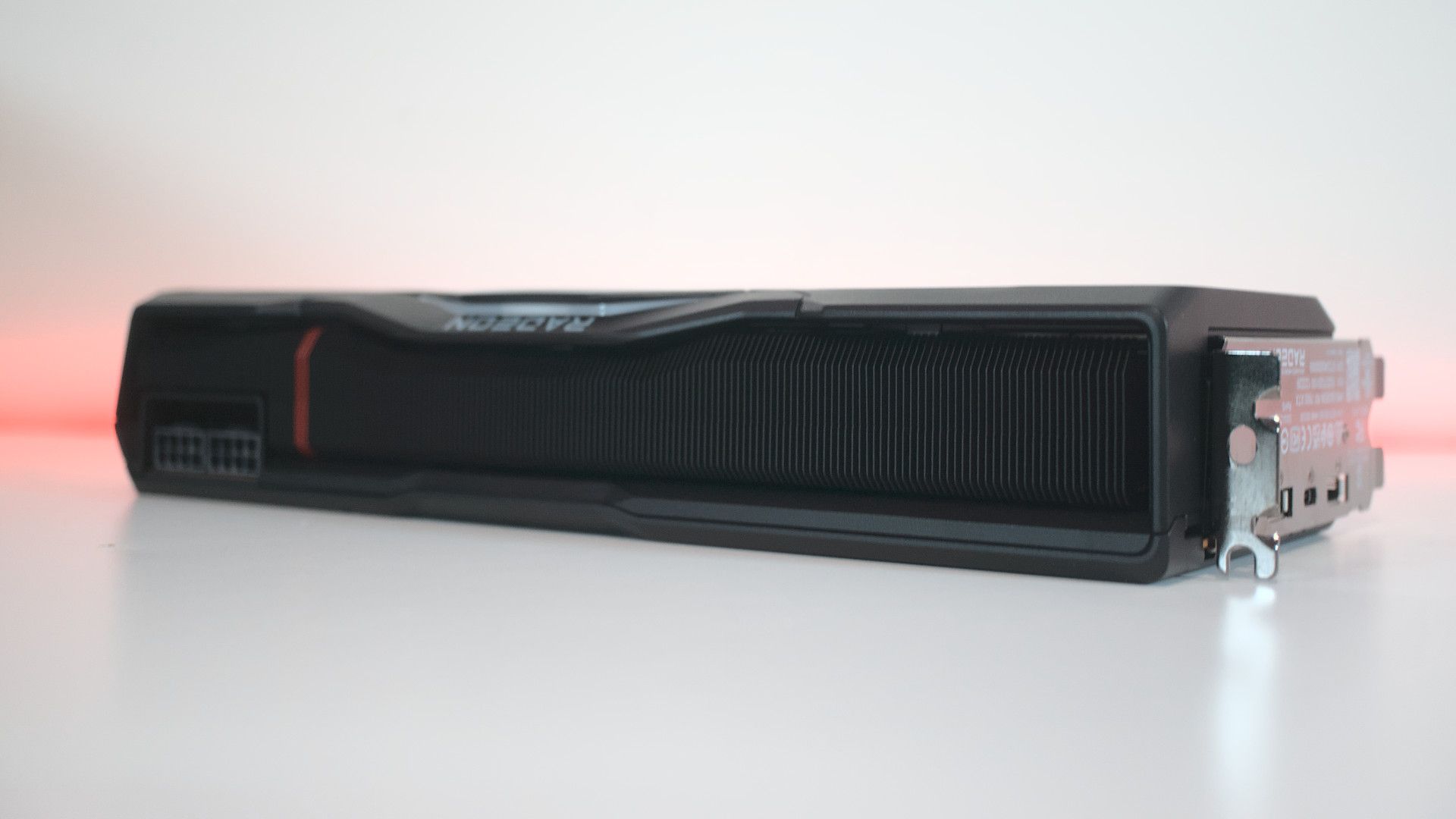
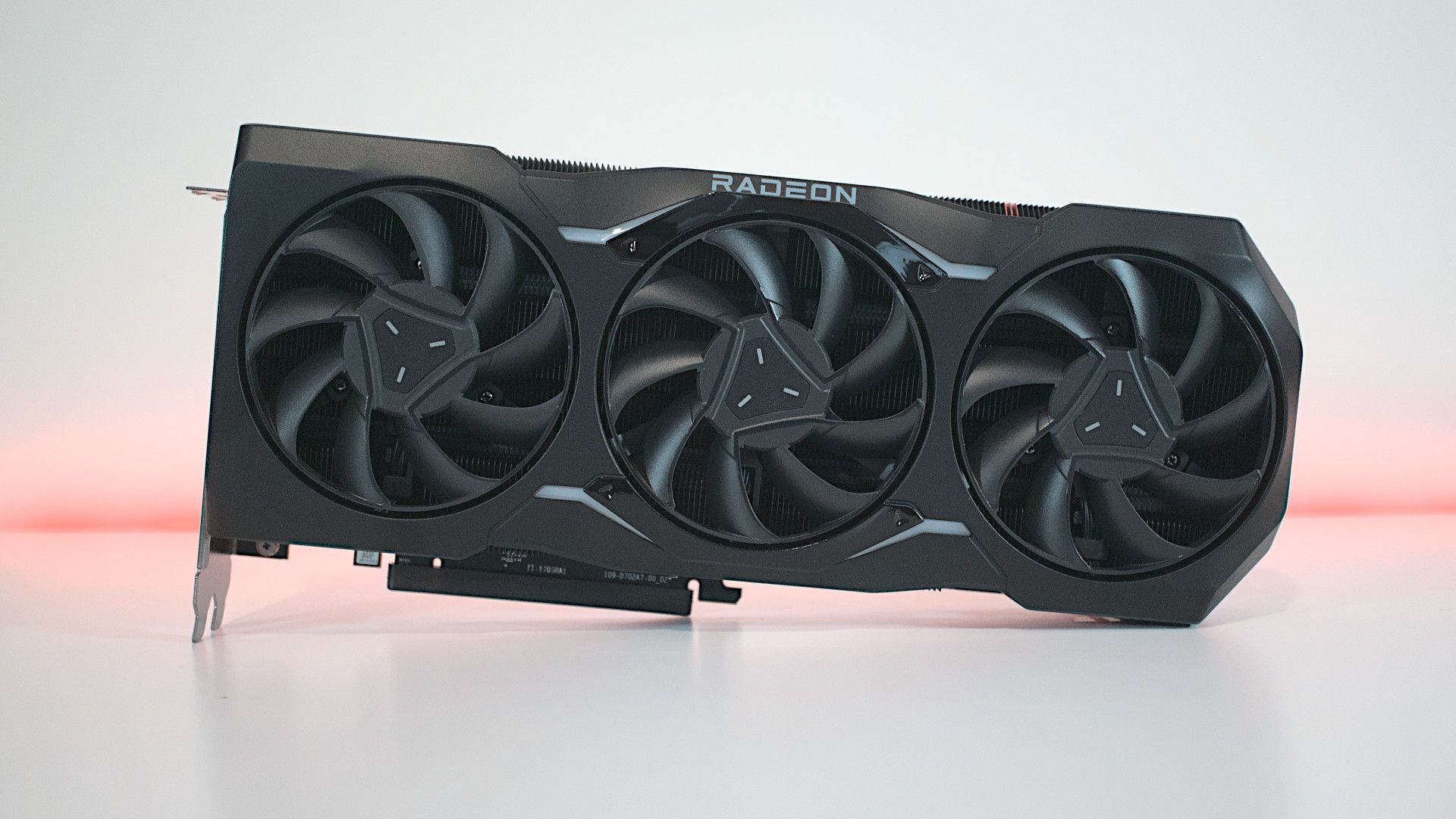
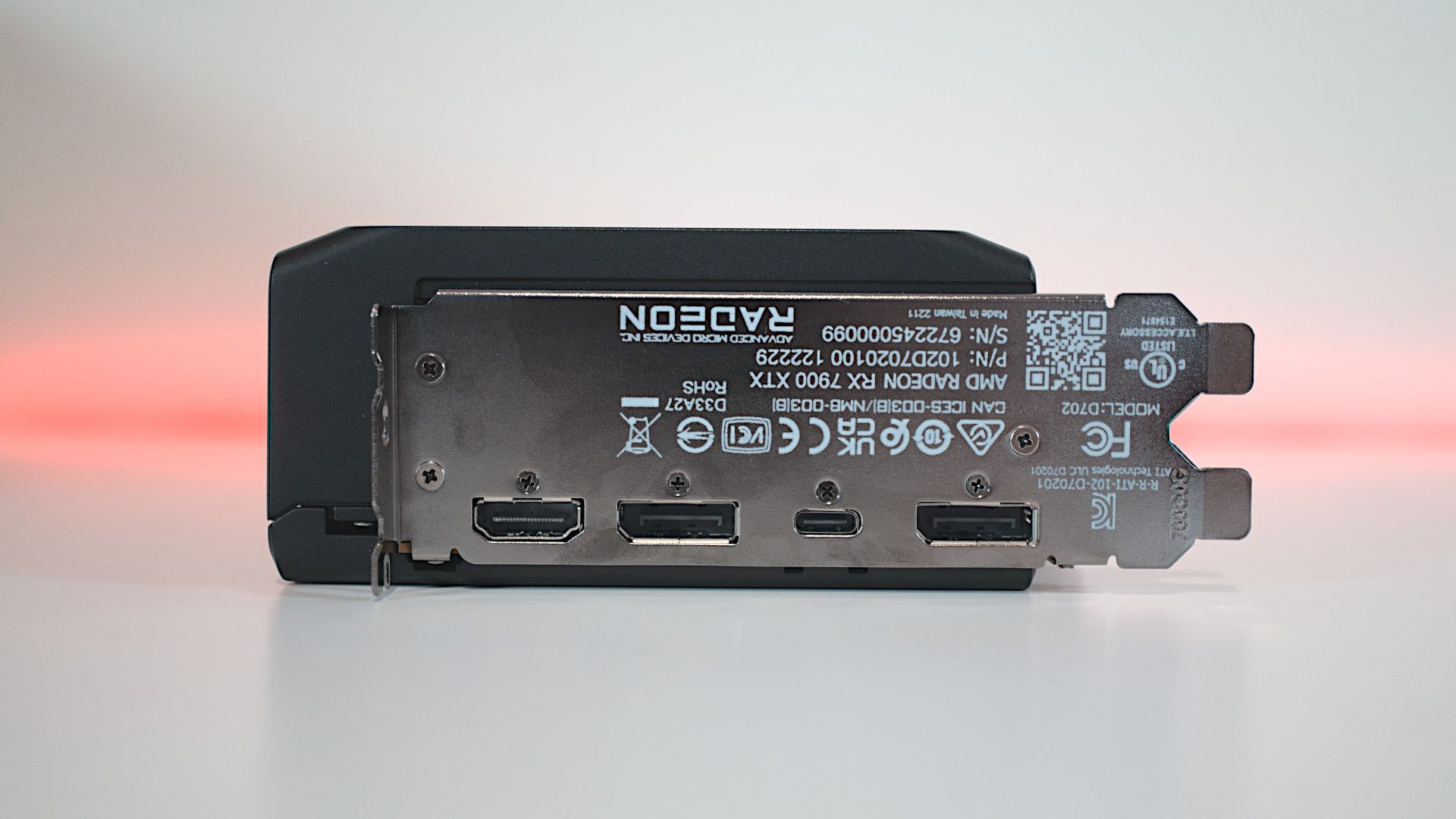
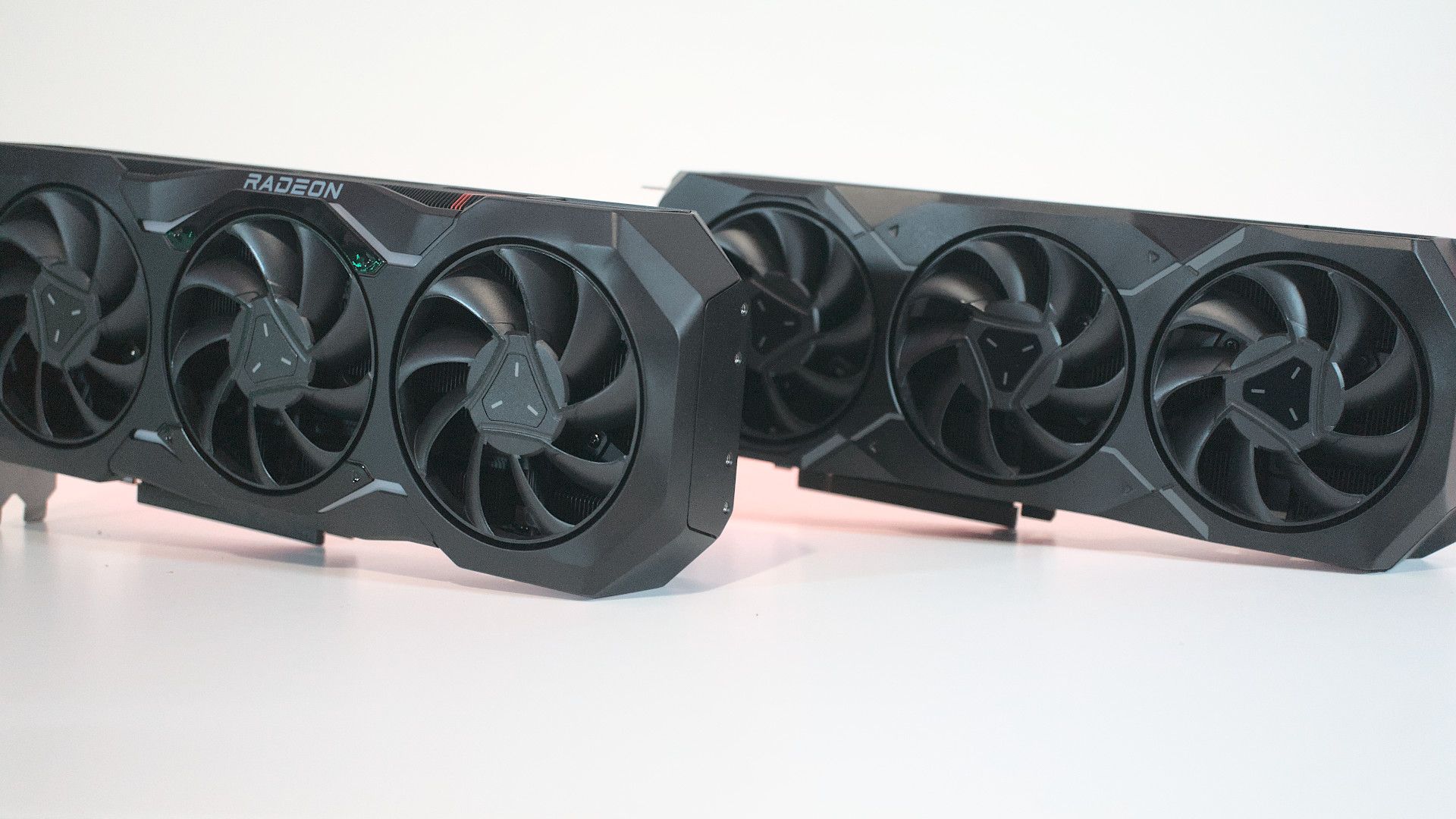
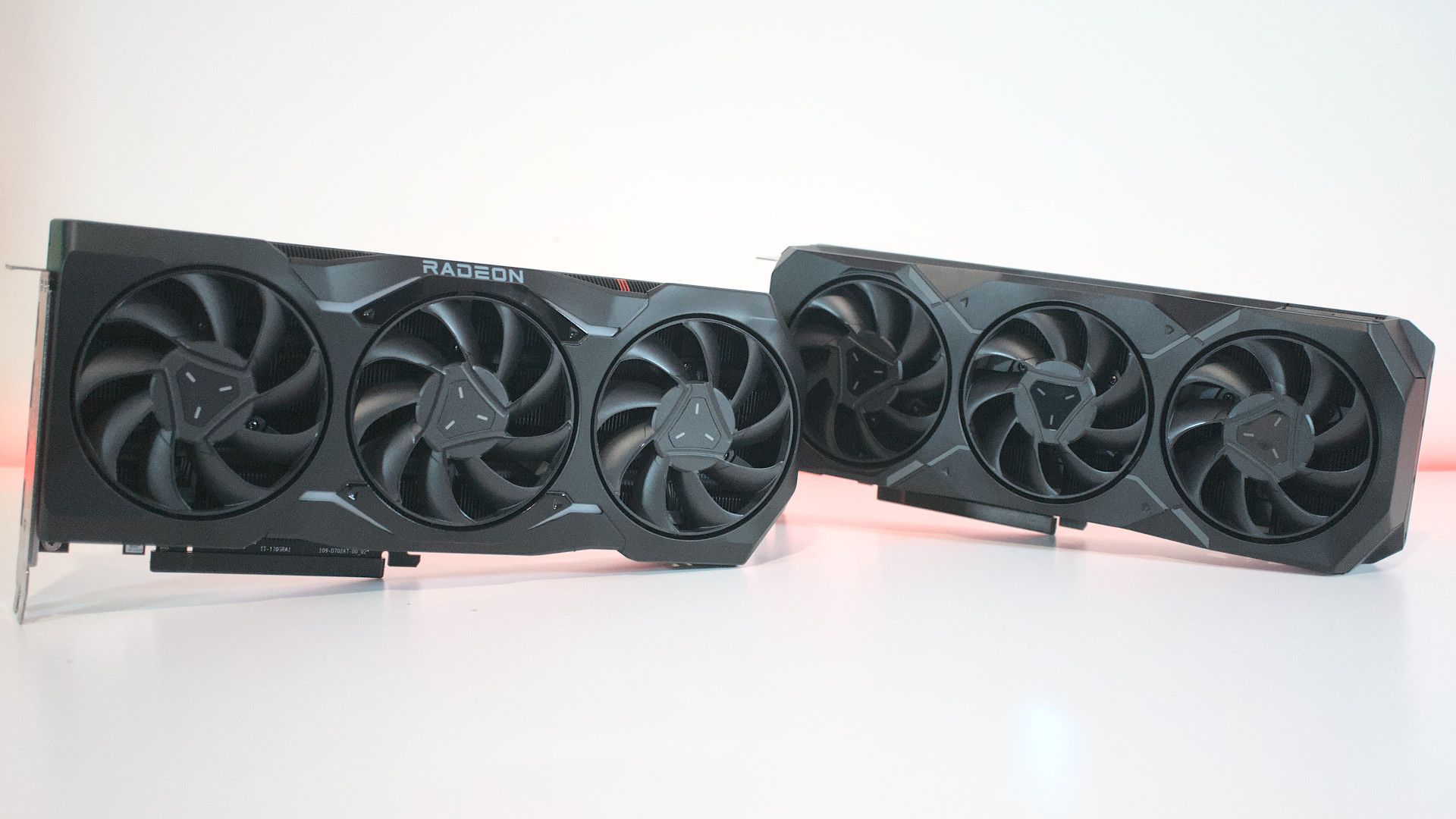
On the rear of the GPU, you'll find a PCI bracket without vents. This is likely due to the layout and direction of the heatsink fins. They're vertical instead of horizontal and are should be forced out the two sides from the three blowers. Back to the plate itself, this is where you'll locate the single HDMI 2.1a port, two Display 2.1 ports, and a USB-C port (with DP 2.1) for monitors that support video signals over USB.
I'm going to highlight the fancy new thermistor, which is the first I've seen in a consumer-grade GPU. This is a really neat addition to the arsenal of sensors already on graphics cards. It's located below one of the three cooling fans and measures the ambient temperature of the air being sucked in to cool the card. This is especially useful for fine-tuning card performance, preventing areas of the GPU from becoming a hotspot, and allowing you to check the ambient temperature inside the chassis.
Some motherboards have headers available that connect with included thermistors but it's usually reserved for the flagship models. It's great to see such a feature on a GPU.
Gaming performance
- Excellent 1440p and 4K performance across the board.
- Beats the more expensive NVIDIA GeForce RTX 4080 in most applications.
It's all well and good reviewing a GPU and talking about the architecture improvements, as well as a cool-looking revised design of the reference card, but all this means nothing if the GPU cannot perform well in games. Let's take a look at our test bench system that was used to put the new AMD Radeon RX 7900 XTX to the test:
- AMD Ryzen 9 7950X CPU.
- ASUS ROG Strix X670E-E Gaming WiFi motherboard.
- 32GB of Kingston Fury Renegade DDR5-7200 RAM.
- Sabrent PCIe 4.0 M.2 SSD.
We tested the AMD Radeon RX 7900 XTX with UHD (2160p) and QHD (1440p) panels and all games were loaded on and from the Sabrent PCIe 4.0 SSD. The performance will differ between an Intel and AMD PC with the GPU having access to AMD's Smart Access Memory, but this will have a negligible impact across the board for most people unless you're after the absolute best performance. Performance on an Intel PC is still stellar.
We also make use of a kilowatt measurement device to see how much power our test bench is pulling from the wall, as well as virtual sensor representation through monitor applications. Synchronization technologies are disabled, including V-Sync, AMD FreeSync, and NVIDIA G-Sync. Though test runs are carried out with them enabled for comparison and notes.
Let's take a look at how the AMD Radeon RX 7900 XTX and the Radeon RX 7900 XT compare against one another:
|
AMD Radeon RX 7900 XTX |
AMD Radeon RX 7900 XT |
|
|---|---|---|
|
Architecture |
RDNA 3 |
RDNA 3 |
|
Process |
5nm, 6nm |
5nm, 6nm |
|
Transistors |
57.7 billion |
57.7 billion |
|
Compute Units |
96 |
84 |
|
Ray Accelerators |
96 |
84 |
|
AI Accelerators |
192 |
168 |
|
Stream Processors |
6,144 |
5,376 |
|
Base Clock Speed |
2,300 MHz |
2,000 MHz |
|
Boost Clock Speed |
2,500 MHz |
2,400 MHz |
|
Memory Capacity |
24 GB GDDR6 |
20 GB GDDR6 |
|
Memory Bus |
384-bit |
320-bit |
|
AMD Infinity Cache |
96 MB |
80 MB |
|
Memory Bandwidth (w/ Infinity Cache) |
3,500 GB/s |
2,900 GB/s |
|
Power Draw |
355W |
315W |
|
Price |
$999 |
$899 |
Let's look at some hard comparable figures using 3DMark's suite of tools. The AMD Radeon RX 7900 XTX is expected to perform on par with and surpass the NVIDIA GeForce RTX 4080, if AMD's own marketing is to be believed.
|
Benchmark |
AMD Radeon RX 7900 XTX |
|---|---|
|
Fire Strike Ultra |
19,984 |
|
Time Spy (DX12) |
29,119 |
|
Time Spy Extreme (DX12) |
14,471 |
These are some seriously strong results for AMD. RDNA 3 and its new chiplet design have clearly allowed AMD to extract yet more performance without vastly increasing the power draw. The RTX 4080 can score just 17,000 (or thereabouts) in the 4K Fire Strike Ultra test, providing AMD with a considerable leap. The RTX 4090 achieved 24,000 so the RX 7900 XTX can be considered a stopgap between NVIDIA's two top-tier GPUs.
But what about games? We've put together a collection of test results below to showcase how the AMD Radeon RX 7900 XTX performs at 1440p and 2160p, with and without ray tracing enabled. They're positive results across the board, only slightly coming behind the RTX 4080, but things take a turn for the worse when ray tracing is enabled. RDNA 3 with second-gen RT accelerators, but they're still not quite where NVIDIA's RTX 40 series is.
|
Game |
AMD Radeon RX 7900 XTX |
|---|---|
|
Cyberpunk 2077 |
|
|
DOOM Eternal |
|
|
Fay Cry 6 |
|
|
Metro Exodus |
|
|
Red Dead Redemption 2 |
|
The AMD Radeon RX 7900 XTX sample we received to test can comfortably pull 346W on average, measured using AMD's own software. Using a kilowatt measurement device at the wall, we could also subtract the CPU and other components to arrive at a similar figure. The rated 350W is absolutely where the RX 7900 XTX will sit when its cores are in use.
The cooling solution is largely overkill for the GPU with an average junction temp of 81C and overall temp of 65C. The three fans ramp up to 1,700 RPM, which results in some notable noise at approximately 44dBA. This was on an open-air test bench, however, and you can expect to see better results inside a PC case where better airflow and surrounding materials can help lower temperatures and mitigate noise from the fans.
Using AMD's software solution for its CPUs and GPUs is a joy these days, which wasn't always the case. NVIDIA was renowned for its better software support, but AMD has made a serious effort to bring its own offering up to par and the latest release makes it easy to manage, monitor, and tune both the AMD Ryzen 9 7590X and AMD Radeon RX 7900 XTX. At stock settings, pretty much everything is disabled, aside from Smart Access Memory.
It's easy to make use of presets available through the software or (if you have some knowledge of what all the sliders and buttons do) you can fine-tune the card and CPU to get the most out of the system. The recorded temperatures show we've got some wiggle room to push the GPU harder, but even at stock (and this isn't an AIB card) the results are promising for 2K and 4K.
Should you buy the AMD Radeon RX 7900 XTX
You should buy the AMD Radeon RX 7900 XTX if:
- You want a better deal than what's currently available on the market.
- You don't mind spending $999 on a flagship AMD GPU.
- You don't require the performance offered by the NVIDIA GeForce RTX 4090.
- You prefer to use AMD's software and have an existing AMD processor for Smart Access Memory.
You shouldn't buy the AMD Radeon RX 7900 XTX if:
- You want the absolute best graphics card available, the NVIDIA GeForce RTX 4090.
- You don't want to spend $999 on a graphics card.
The AMD Radeon RX 7900 XTX is an excellent graphics card and RDNA 3 has allowed the company to ramp up its efforts to deliver performance that almost matches the best from NVIDIA. With how current GPU prices continue to inflate the cost of a new PC build that's often out of the reach of consumers, it's good to see AMD offer better value here. It's not quite back down to the prices we saw pre-pandemic, but it's better than the RTX 4080 launch price of $1,199.
Should you be on the hunt for a new GPU as we move into 2023 and have 4K gaming in mind, the AMD Radeon RX 7900 XTX should be shortlisted if it fits within your budget.
AMD Radeon RX 7900 XTX
The RX 7900 XTX is Radeon's latest flagship graphics card, offering considerable gains across multiple resolutions over the older RX 6000 generation of GPUs.

